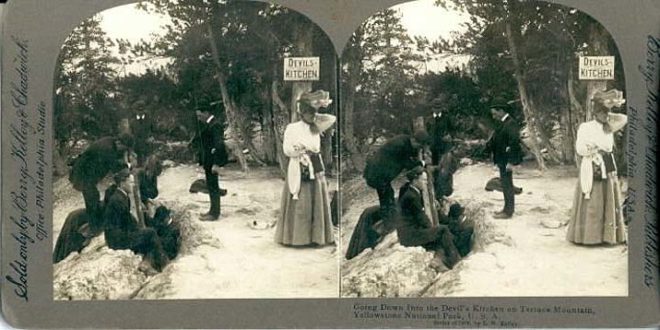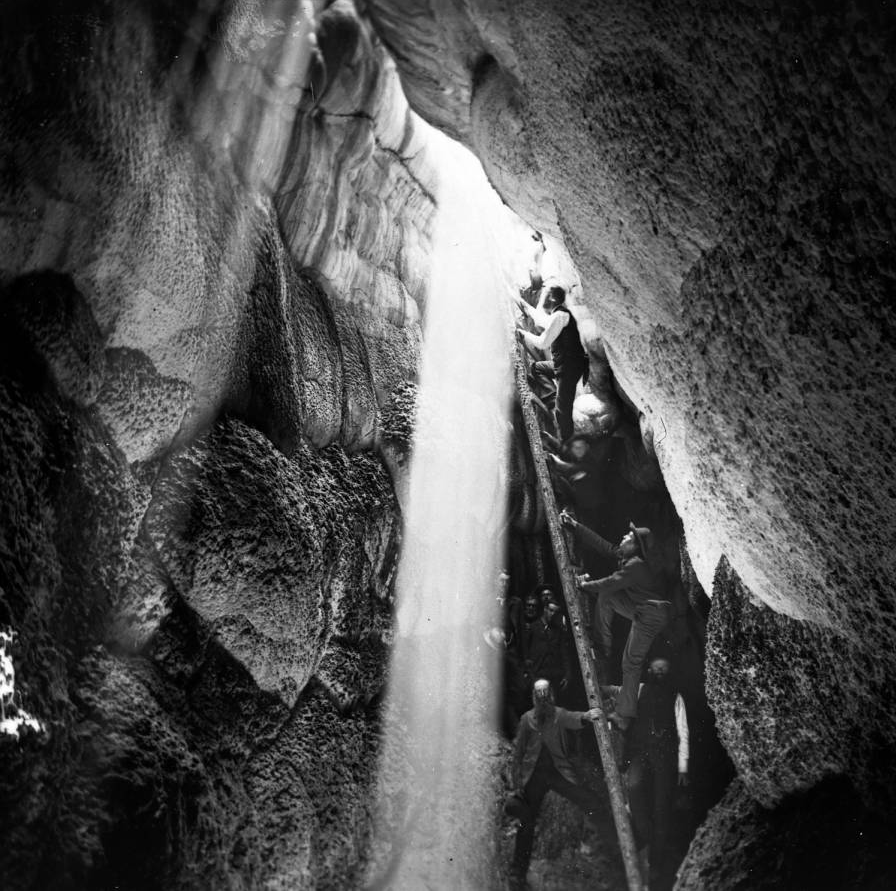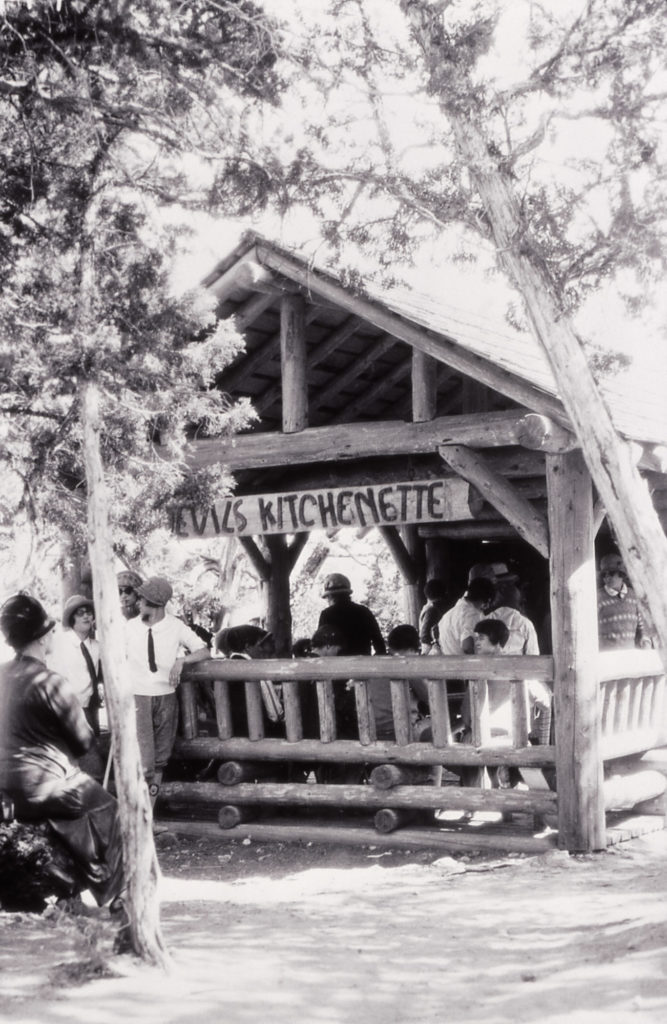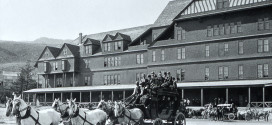The Devil’s Kitchen is all but unknown in today’s Yellowstone National Park.
Located east of Bath Lake in the Mammoth Hot Springs area, the Devil’s Kitchen (for all its hellish imagery) was just a cavern—one regularly pumping out gases, of course. Further, it was itself the remains of a hot spring.
What makes the Devil’s Kitchen interesting, in terms of Yellowstone history, is its uniqueness as a tourist attraction. In the early history of Yellowstone tourism, the Devil’s Kitchen was an interesting feature, despite featuring none of the hallmarks of a typical thermal attraction. It didn’t bubble, or pop, or flow, or cascade, or even hiccup. It wasn’t distinguished by its impressive colors.
Rather, what made the Devil’s Kitchen so interesting was that visiting it felt like you were descending into the underworld.
Origin of the Name
According to Lee H. Whittlesey, writing in Yellowstone Place Names, the name “Devil’s Kitchen” first appeared in the The Avant Courier, a Bozeman weekly published between 1871 and 1872. It was referenced in a letter to the editor from one “Bemus,” writing a larger report about Mammoth Hot Springs. From the June 27, 1872 edition of The Avant Courier:
The recent discoveries made by Mr. Chas. Millard of Fort Ellis on the property of the proprietors of the springs are the “Devil’s Parlor, “the same gentleman’s “Well” and his Majesty’s “Kitchen.” Not having made a descent into these curiosities fifty feet below the surface, I will, therefore, wait until I have gazed on these wonders before I attempt a description, not wishing to write them up from the report of others, but to write of them as I saw them.
According to Whittlesey, the Devil’s Kitchen first became a tourist attraction in 1884, when tour operator G.L. Henderson built the first ladder into the Devil’s Kitchen. The photo above, taken by Frank J. Haynes, depicts the Devil’s Kitchen circa 1884.
Early in the Park’s history, the Devil’s Kitchen was seized as a wonderful curiosity. It certainly made an impression on A.B. Guptill, who included a longish description of the feature in the first few Haynes guides. It’s worth noting that Guptill attributes the Devil’s Kitchen exploration to a time earlier than 1884:
Devil’s Kitchen is the crater of an extinct hot spring. It can be entered with safety. Through a small opening some six or eight feet in diameter you descend a ladder into the kitchen. The peculiar damp and heated atmosphere of the interior produces a queer sensation and the desire to seek fresh air at once comes over the visitor. When the Devil’s Kitchen was first explored (in 1881) numerous bones of wild animals were found in the cave and it was alive with the flying bat.
Later guides published after Frank passed away (and passed on his company to son Jack Ellis) still mentioned the Devil’s Kitchen, saying, “no one should leave Mammoth Hot Springs without going down in the Devil’s Kitchen.” The Devil’s Kitchen was so popular, in fact, that by 1925 a small ice cream and soft drink stand had been established there—appropriately named “The Devil’s Kitchenette,” shown above.
“It was a gloomy, dismal place”
Not all visitors were so entranced. In his travelogue Rambles in Wonderland, Edwin James Stanley recounted standing above the Devil’s Kitchen and finding himself dissuaded from descending:
Certain portions of the mountain also abound in caverns which were once the scene of boiling reservoirs. One of these has been partly explored, and is known as the “Devil’s Kitchen;” but, meeting at the entrance a volume of the warm, sickening atmosphere, I desisted from further explorations. It was a gloomy, dismal place, and we could see little bats flitting to and fro, after the stones that we dropped in. In one of these caverns I saw the skeleton of a young deer or elk, which, in its playful gambols, had gone too near and fallen in and perished.
Most travel literature at the time cited a descent into the Devil’s Kitchen as being perfectly safe, “the desire to seek fresh air” notwithstanding. But based on the amount of bones lying in the Devil’s Kitchen, we’d guess by “queer sensation” Haynes really meant “suffocation.” Indeed, according to Whittlesey, the Park Service closed off the area in 1939, citing dangerous levels of carbon dioxide gases in the cave.
It goes without saying, of course, that you shouldn’t go spelunking in the Devil’s Kitchen today—unless you want to join the myriad bones below.
 Yellowstone Insider Your Complete Guide to America's First National Park
Yellowstone Insider Your Complete Guide to America's First National Park








You must be logged in to post a comment.